

Max Davies
2026 Toyota HiAce review
2 Hours Ago
The Kia Niro is back for a second generation, with a more confident look and an interior inspired by the EV6. It's priced in line with some tough competition though.

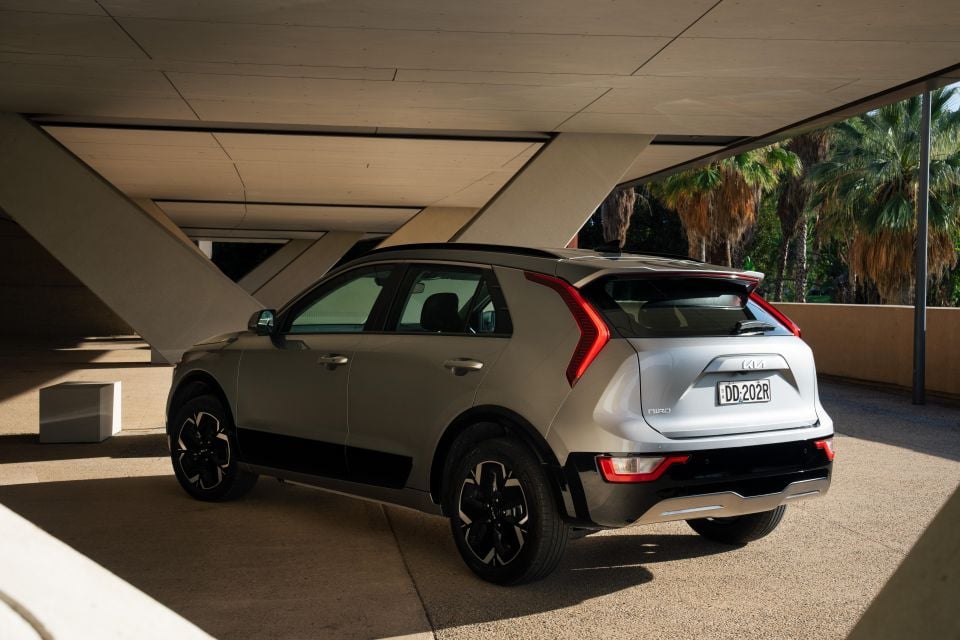

Quickly see how this car stacks up against its competition. Select any benchmark to see more details.
Where expert car reviews meet expert car buying – CarExpert gives you trusted advice, personalised service and real savings on your next new car.
The last Kia Niro was a bit of an oddity in Australia.
It was introduced five years after its European debut, with looks and interior technology out of keeping with the wider range, and always felt like a placeholder for Kia Australia as it geared up for the EV6 and this, second-generation Niro.
Although it shares parts of its electric and hybrid powertrains with the last Niro, the new car is a different beast. It has a bold new look, a cabin inspired by the EV6, and updated powertrains designed to pack more of a punch, and use less energy (or fuel) doing it.

Like before, the Niro is a jack of all trades. It’s offered with hybrid (HEV) and electric (EV) power in Australia, and as such is built on an adapted version of the company’s new small car internal-combustion platform shared with the Hyundai i30 Sedan.
In the case of the Niro EV, that means it can’t charge nearly as fast as an EV6 plugged into a DC public fast charger. It also means there’s limited storage under the bonnet, and that the Niro can’t be had with a powerful dual-motor setup like the EV6.
Regardless of which model you look at, the Niro is up against tough competition. The HEV is slightly smaller than the Toyota RAV4 but is priced in line with Toyota’s rampantly popular hybrid SUV, and the EV is aligned with everything from the Tesla Model 3 to Kia’s own EV6.
Does the two-powertrain, four-model range have what it takes?
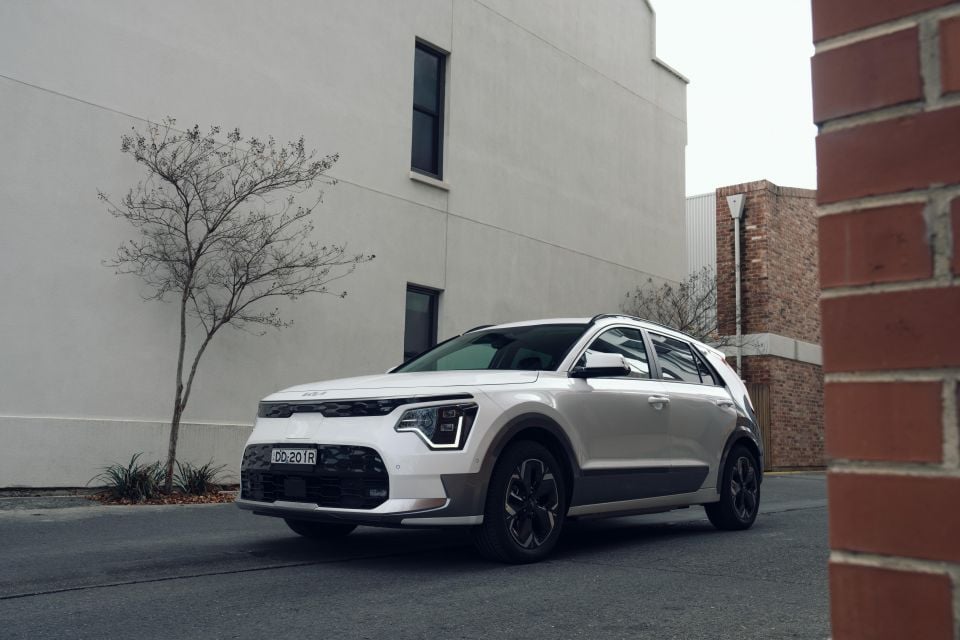
Pricing is up compared to the outgoing model, with the base Niro HEV now starting at $44,380 plus on-road costs, and the cheapest Niro EV priced from $65,300 before on-roads.
The HEV now kicks off $4500 higher and the range-topper is $6100 pricier than before, while the entry-level EV is priced in line with the outgoing range-topper.
At the bottom end of the range, the HEV S is aligned with the Toyota RAV4 XSE or Cruiser 2WD hybrids ($43,250 or $45,750 before on-roads). It’s also priced on a par with the Honda HR-V e:HEV L ($45,000 drive-away). Meanwhile, the EV S is priced in line with the base Tesla Model 3 sedan ($65,500 list) and $6200 below the entry Model Y SUV.
On the back of a recent price rise to the EV6, the Niro EV S is $7000 cheaper than the EV6 Air RWD, while the EV GT-Line is almost a perfect match for it on price.
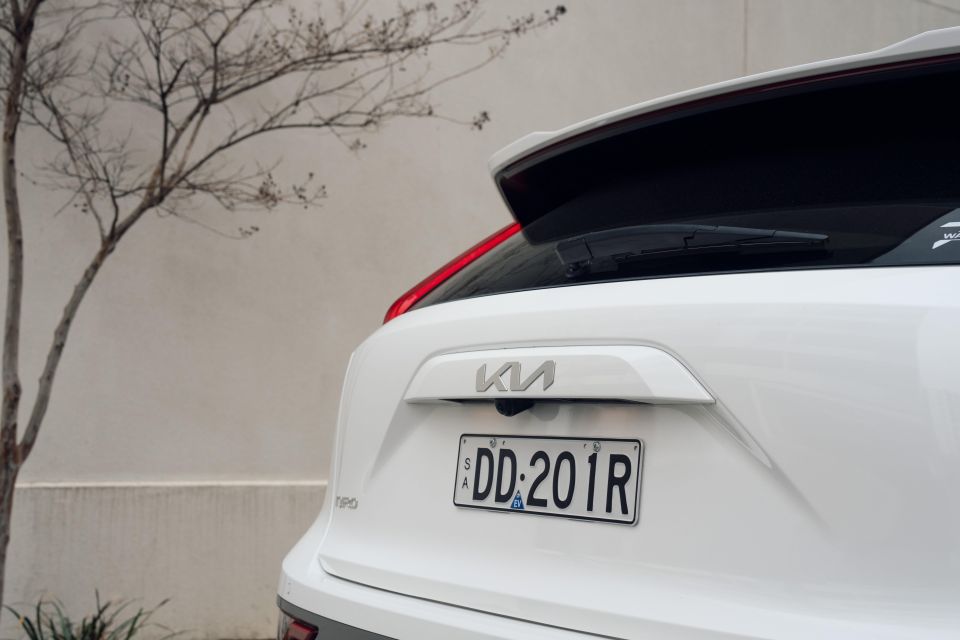
2022 Kia Niro pricing:
All prices exclude on-road costs
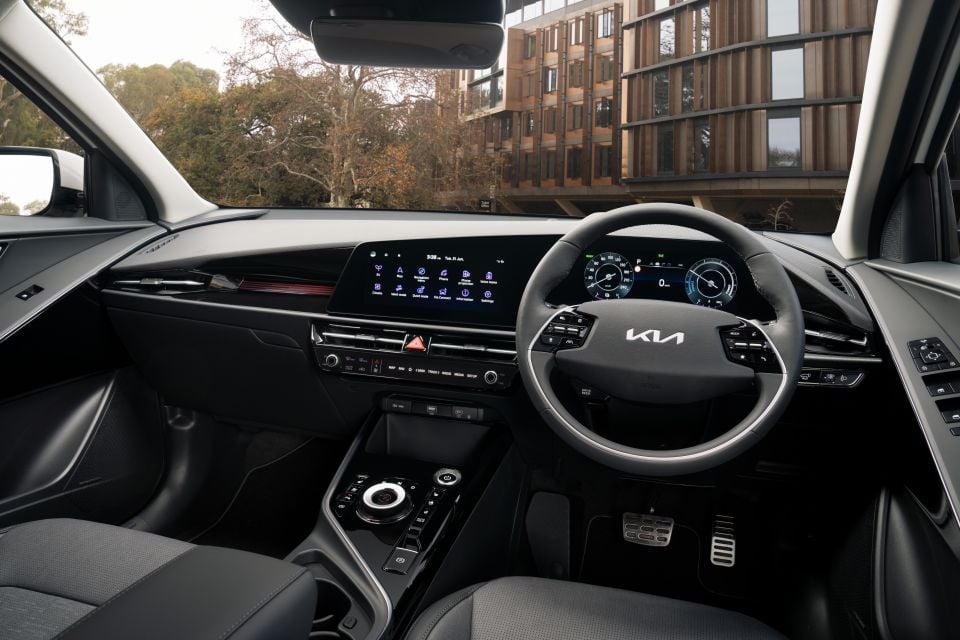
Buy your new car without the stress. It's fast, simple and completely free.

Great service from Travis and team, second time I have used this business would not hesitate to recommend them to anyone
Craig C.
Purchased a Ford Ranger in Sunshine Coast, QLD
CarExpert helped Craig save thousands on his Ford Ranger, now let us save you on your next new car.
Find a dealBehind the wheel it’s a tale of two Niros. The range-topping GT-Line, in both EV and HEV guise, feels like a scaled-down take on the show stopping EV6 with a flashy dual-screen dashboard, interesting materials, and leather-trimmed single-spoke steering wheel.
The S, on the other hand, feels like a fleet-spec car in a lot of ways. The seats are comfortable and it doesn’t want for anything on the infotainment front, but the 8.0-inch screen looks tiny and the super basic, calculator-style dials on the HEV S aren’t befitting a car of this price.
The Niro is meant to be a high-tech eco-credential-builder for Kia, given it’s a low-volume offsider to the equally low-volume EV6 at this stage, but the base model’s technology suite feels less showcase, and more Seoul taxi.
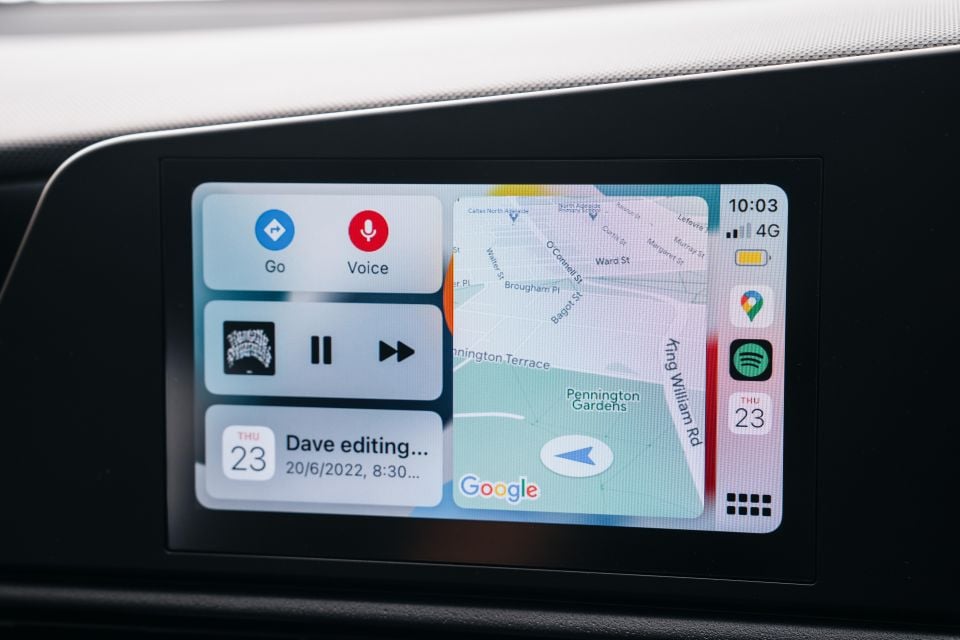

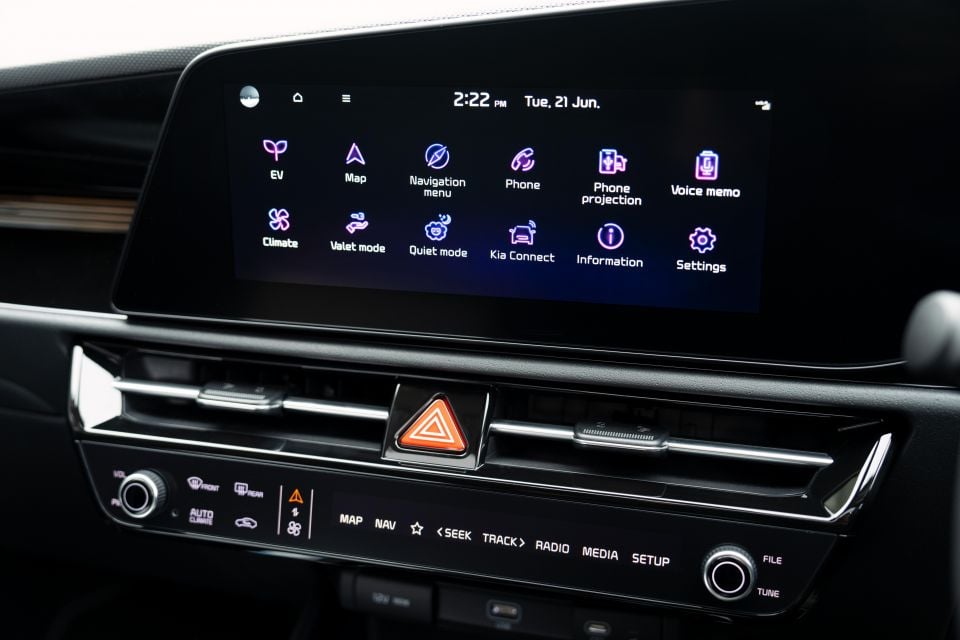
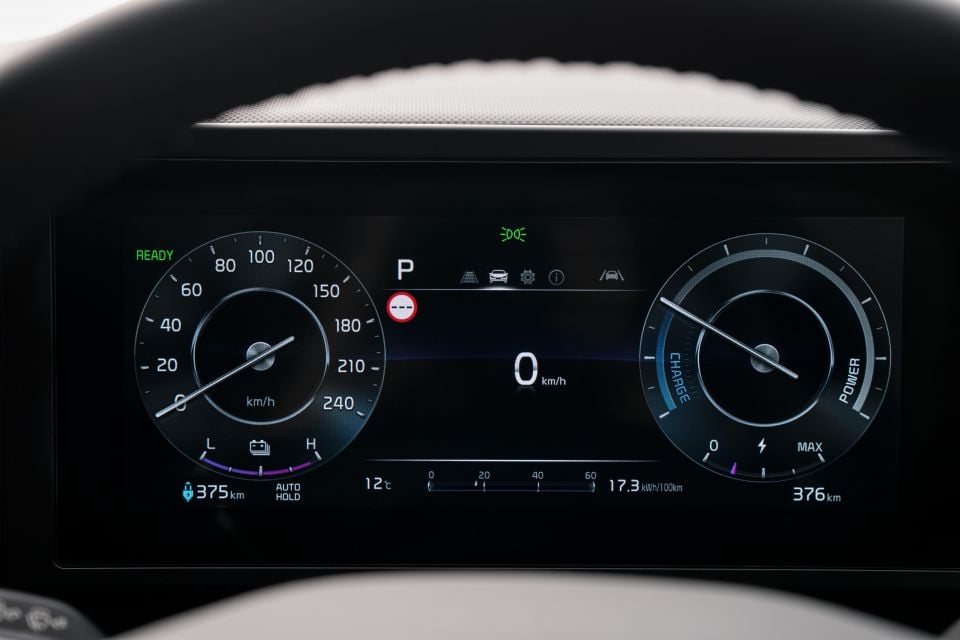
Regardless of which model you choose, the driving position is good. You sit quite high on generously-padded seats with electric adjustment across the board, and even the charcoal cloth on base models feels suitably high-end. The fact the S has a urethane steering wheel (and turn-key ignition in the HEV) borders on offensive though, given the price.
Infotainment is fine in the base model. The 8.0-inch touchscreen is dwarfed by its plastic surround and its slightly blocky, basic graphics are a reminder the same system serves in a Picanto sitting $25,000 below the Niro on the pricing ladder.
Wireless CarPlay and Android Auto are handy inclusions, and worked reliably during our brief stint in the S, while the 10.25-inch digital instrument cluster on the EV S brings it more closely into line with the GT-Line.
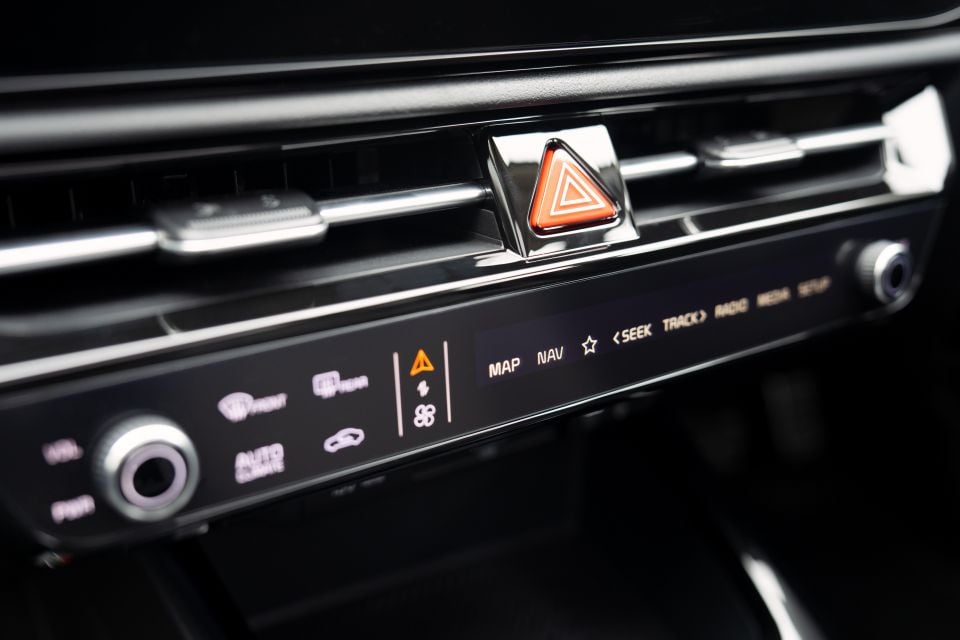
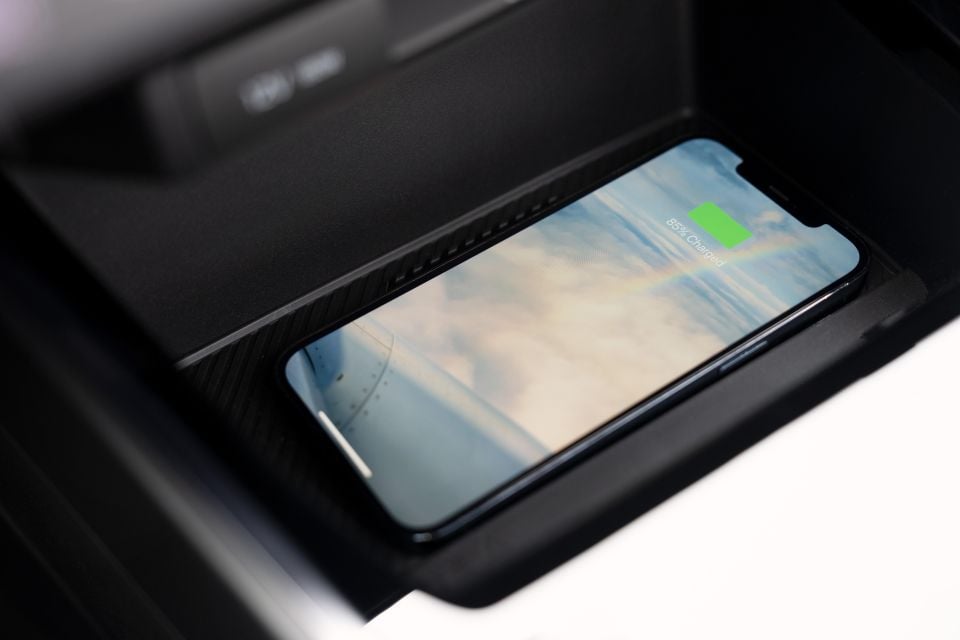
Both cars get the excellent strip of touch controls that features in the Sportage, capable of managing media or climate. They’re an elegant way to clean up the dash without sacrificing functionality.
Speaking of the GT-Line, its dual-screen infotainment setup looks like it belongs in the car’s gloss black housing, although it’s still not quite as cohesive as the curved displays on the Sportage and EV6.
The higher-end screen loses wireless CarPlay and Android Auto, but gains factory satellite navigation, prettier graphics, and faster responses.
There’s plenty of storage up front, from the open bin with cupholders in front of the central armrest, to the space at the base of the dashboard, and the spacious door pockets.
The transmission tunnel is also home to a neat rotary gear selector in all but the HEV S, and features plenty of buttons to poke and prod in GT-Line models.


It’s also worth noting the GT-Line debuts Kia Connect in Australia. It allows owners to check their fuel levels or charge status from their phone, lock or unlock the car remotely, or track a stolen car through their phone. Based on our fiddling, it works quickly and reliably provided your phone and car have a cellular connection.
Rear seat space is decent, given the Niro’s size. There’s enough legroom to accomodate adults behind adults, and headroom is good back there. There are USB-C ports integrated into the front seatbacks, and air vents to keep kids cool in summer.
The tall window line means there’s plenty of light back there, although the chunky C-pillar does undermine the sense of space somewhat.
It’s bigger and more accomodating than its small SUV rivals, although it’s smaller than a RAV4 or Forester back there if you’re looking at similarly-priced hybrids.
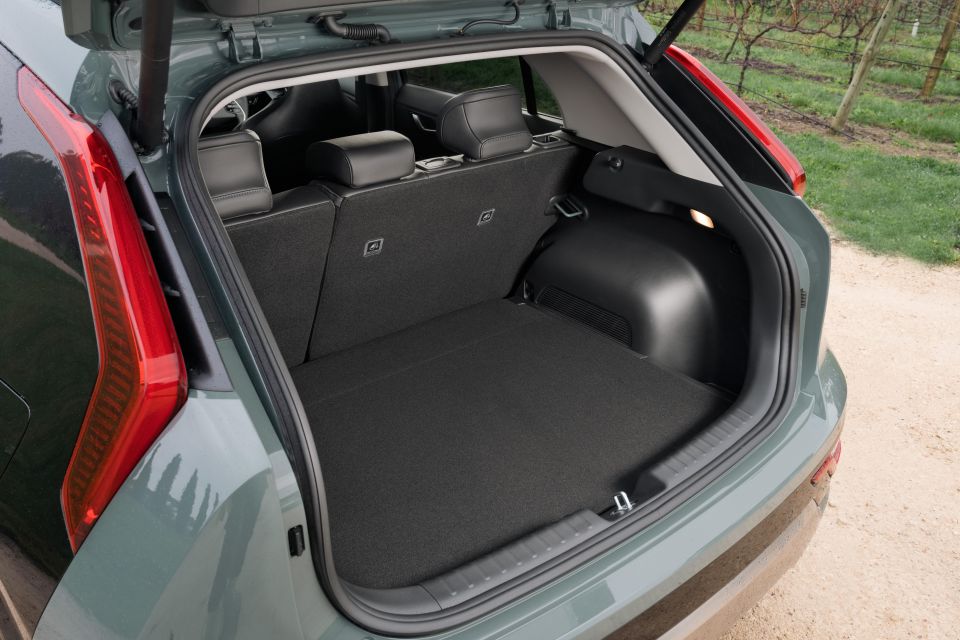
EV buyers will notice a power outlet beneath the rear bench; it’s capable of running a standard laptop charger or even something like a blender if you’re keen to juice on the go.
Boot space in the HEV is 425L with the rear seats in place due to the standard space saver spare wheel, while the EV has 475L in the rear and a further 20L under the bonnet.
Kia says you’ll get two golf bags in sitting horizontally thanks to the broader boot, and was keen to highlight the lightweight luggage cover, which folds into a tiny bag beneath the boot floor like a beach sunshade.
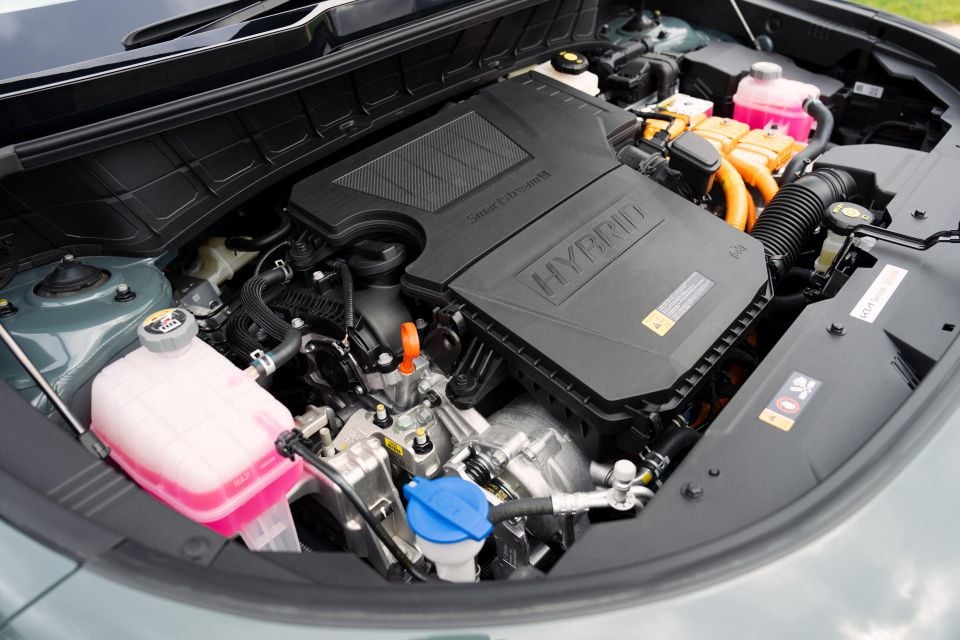
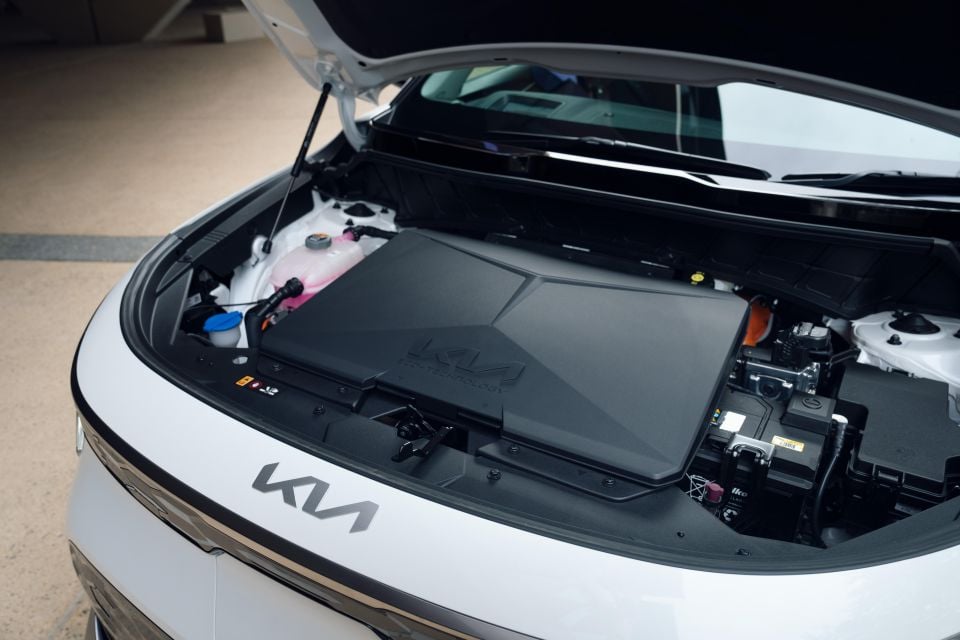
Power in the Kia Niro HEV comes from a 1.6-litre petrol engine backed by a transmission-mounted electric motor.
The e-motor makes 32kW and 170Nm, while the petrol engine pumps out 77kW and 144Nm. Peak combined power is 104kW and peak combined torque is 265Nm.
It’s front-wheel drive, and puts its torque to the road through a six-speed dual-clutch transmission. The transmission is lighter than before because it no longer has a reverse gear, instead using the electric motor.
The 1.32kWh battery beneath the rear seats doesn’t store enough energy to offer a meaningful electric range like a PHEV or EV, but the electric motor can power the car for short periods, or provide a performance boost.
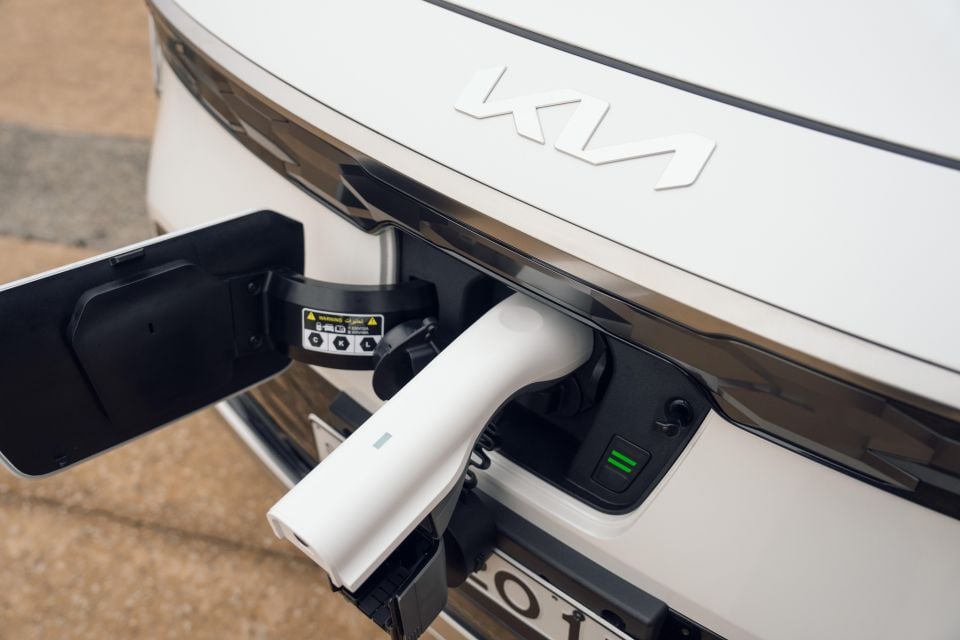
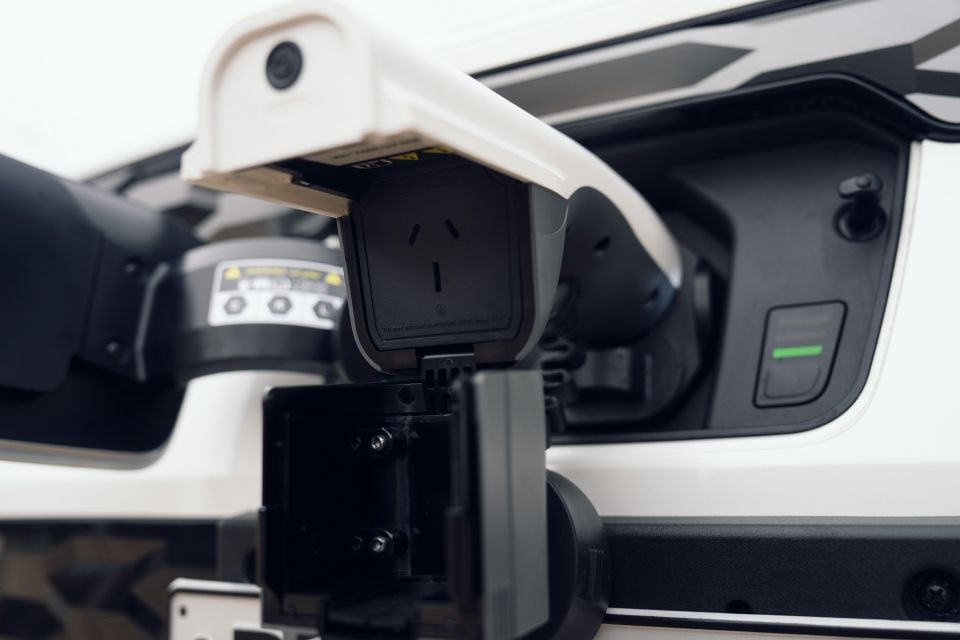
Claimed fuel economy is 4.0 litres per 100km on the combined cycle, and the Niro HEV has a 42L fuel tank that drinks regular 91 RON unleaded.
The Niro EV packs a 64.8kWh lithium-ion battery pack, mated with a front-mounted motor making 150kW and 255Nm.
Claimed range is 460km on the WLTP test cycle, equivalent to energy consumption of 16.2kWh per 100km. The car is capable of 11kW AC charging, or 80kW plugged into a DC public fast charger.
The range-topping GT-Line has V2L capability like the EV6, allowing owners to run appliances using the car’s lithium-ion battery.
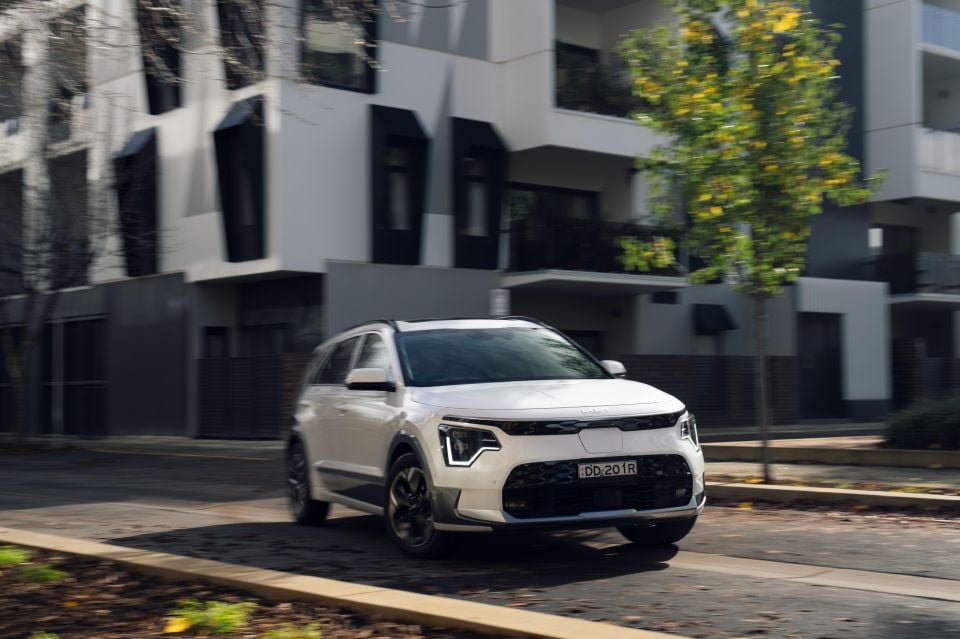
The Niro EV is expected to be a stronger seller than the HEV, so that’s where we’ll start.
Keen observers will note the fact the 2022 Niro EV has the same amount of power as its predecessor, but 140Nm less torque. Kia says that’s designed to make the car more driveable, and less likely to vaporise its tyres when you bury the right-hand pedal at low speed.
In the real world, you don’t really notice the missing torque. The Niro lacks the shove in the back of a rear-wheel drive EV6 (let alone a Tesla Model 3) but it still gets off the mark quickly, and offers smooth, instant response when you put your foot down on the move.
The 100km/h sprint takes a claimed 7.8 seconds, which feels accurate in the real world. That performance is delivered with an absolute minimum of fuss, even by electric car standards.
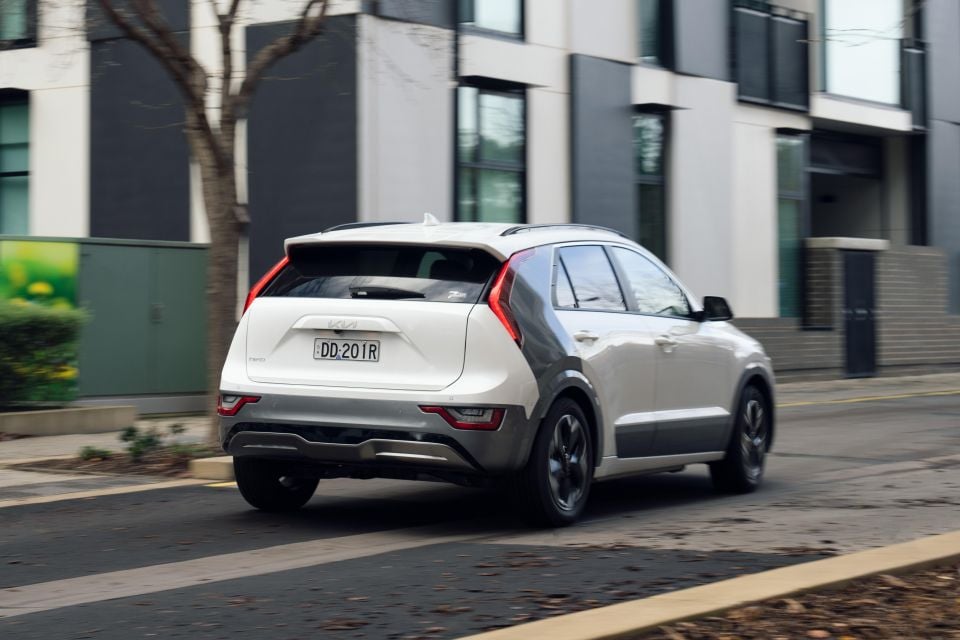
Kia says the new platform beneath the Niro houses more sound deadening than before, and in the EV that pays off with a serene driving experience. There’s hardly any wind or road noise at highway speeds, even on average Australian B-roads, and the motor is silent.
There are four modes of brake regeneration on offer using the paddles, ranging from a fairly light touch necessitating you use the brake pedal essentially all the time to the same i-Pedal setup on offer in the EV6, which allows for one-pedal driving.
The regeneration cuts in smoothly and is easy to adjust to, but it’s hard to understand why Kia forces you to activate iPedal mode every time you start the car.
Where the HEV has reasonably quick steering, the rack has been slowed down for the EV. Combined with the weight of the battery, 17-inch wheels instead of the HEV’s 18s, and what feels like a slightly softer suspension tune, the EV GT-Line feels a more natural cruiser than the hybrid.

Where expert car reviews meet expert car buying – CarExpert gives you trusted advice, personalised service and real savings on your next new car.
You can feel its weight in the corners, but the ride quality over pockmarked roads is good as a result. It never feels floaty over crests or big dips though, with tightly-controlled rebound. Unlike the last Niro, the 2022 model has a local tune for both the steering and suspension.
The Niro Hybrid is a different beast entirely. The electric motor and petrol engine both power the front wheels through the six-speed transmission, which means it can feel a bit disjointed at times.
At low speeds and on light throttle inputs it leans on the electric motor, before the petrol engine fires to lend a hand. Ask for more performance and the transmission kicks down sharply, which elicits more noise from the engine, a bit of a jolt in the cabin, and a decent enough shove in the back.
It’s common for a conspicuous handoverbetween electric and petrol power in hybrids – even Toyotas with their eCVT transmission aren’t seamless – but the fact the transmission in the Niro needs to kick down at times adds another layer of awkwardness to proceedings.

The trade-off for this occasional awkwardness when you’re commuting is a more natural feeling when you’re in a hurry. Flick into Sport Mode and the paddles behind the wheel of the HEV GT-Line control the transmission, not the brake regen, so you’re able to treat it like a conventional combustion car on a fun piece of road.
Where the EV feels quite tall and heavy in the corners, the HEV has hints of Cerato GT DNA coursing through its veins. Its quicker steering makes it easy to flick the nose in, and the chassis feels planted when you’re in a hurry.
The Niro is the first Kia to get a full local suspension and steering tune since COVID hit, and the Kia DNA we’ve come to know is on show – particularly in the HEV.
Both the EV and HEV come with a full suite of active driver assists, save for the blind-spot cameras featuring in the Stinger, Sportage, and EV6. They’re smooth and smart, although the lane-centring assist is still too hands on. Thankfully when you turn it off, it stays off.
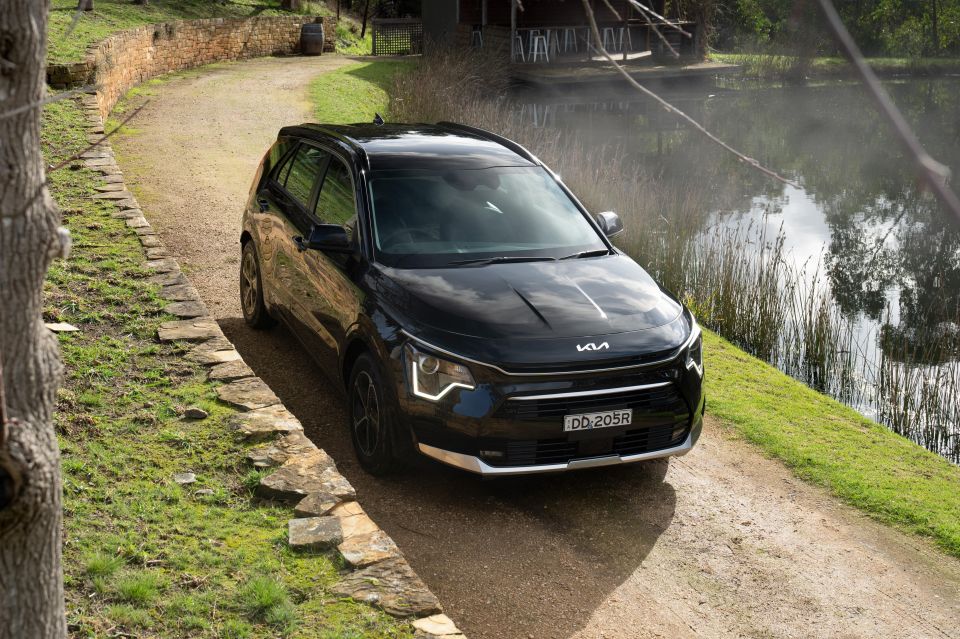

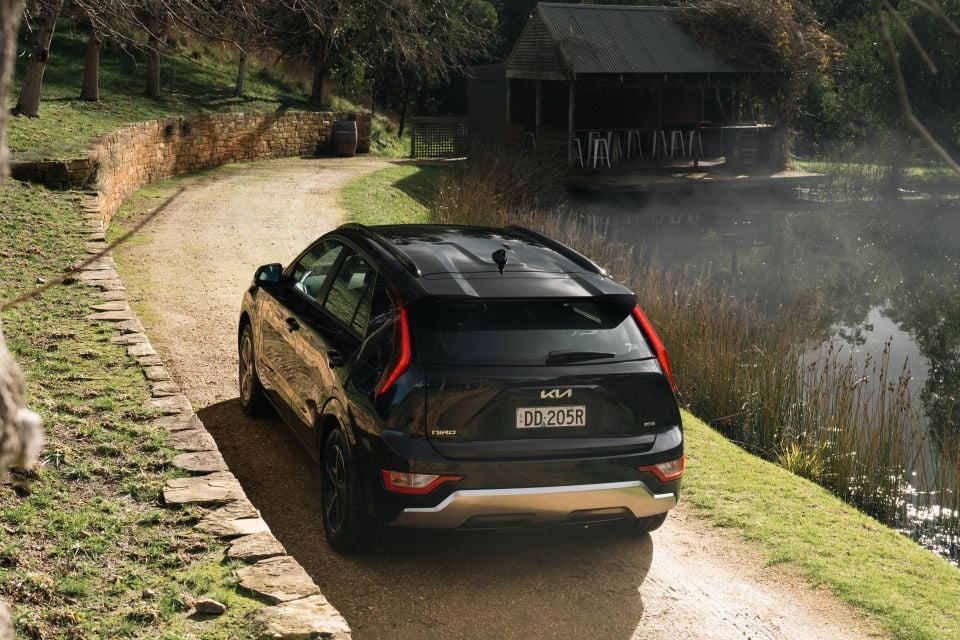
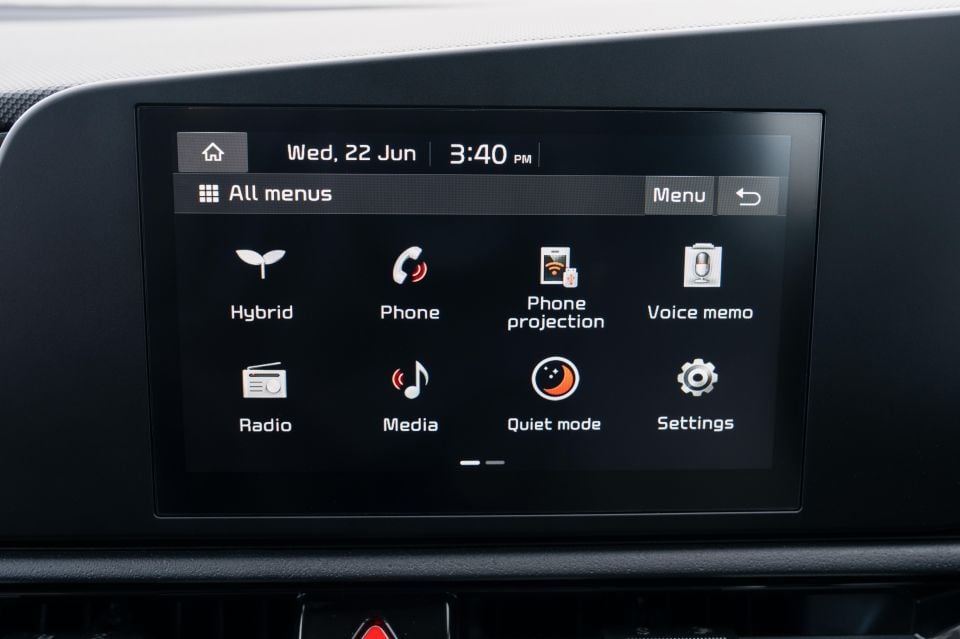
Niro HEV S highlights:
Niro EV S adds:
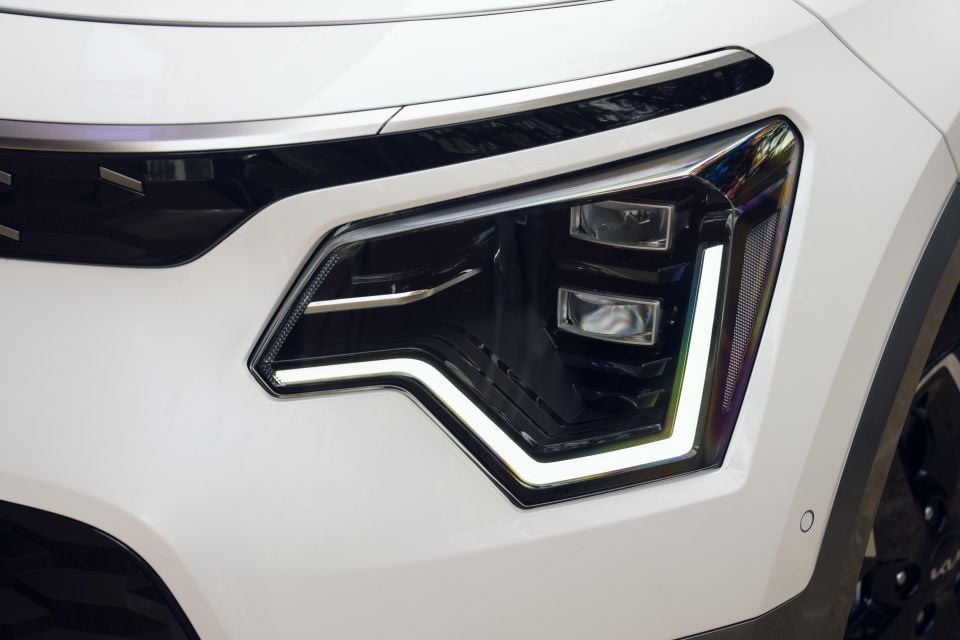
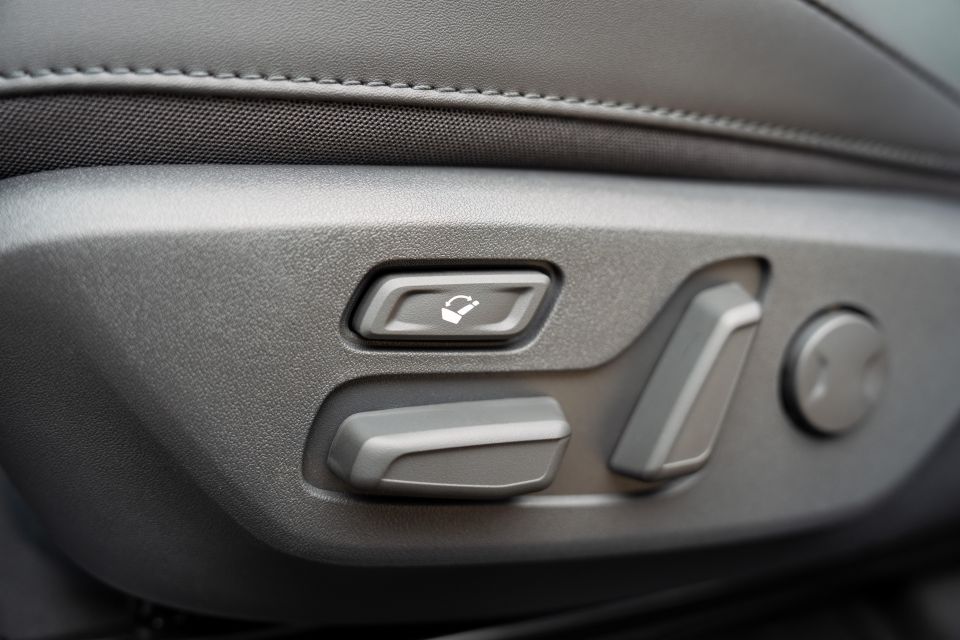
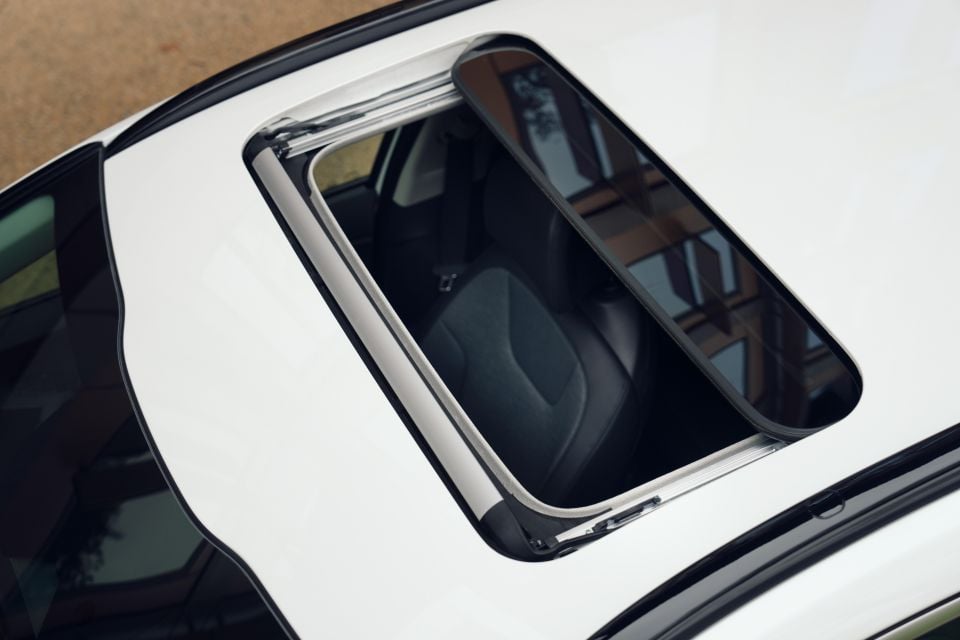
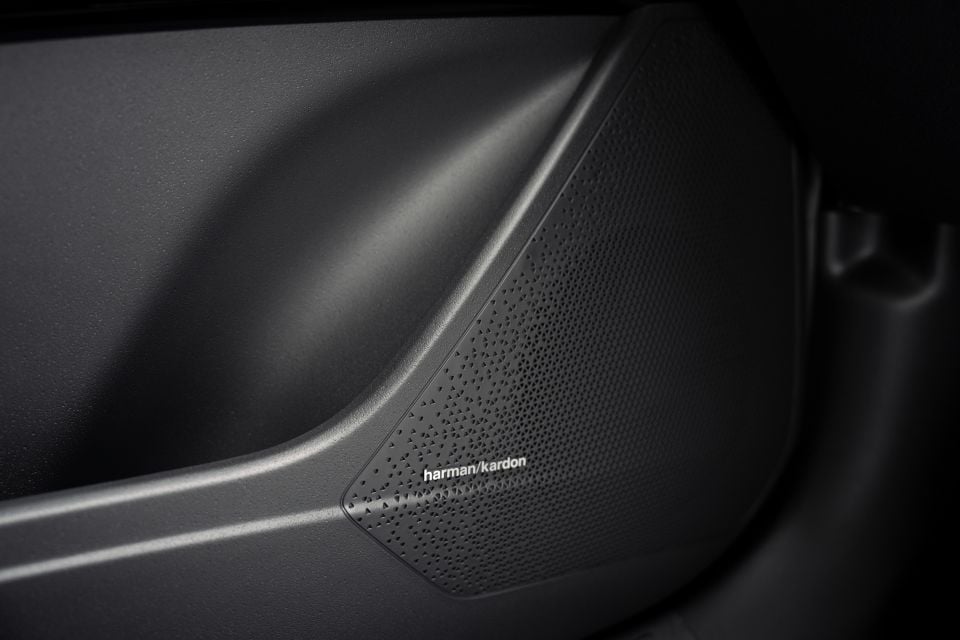
Niro HEV GT-Line adds:
Niro EV GT-Line gets:
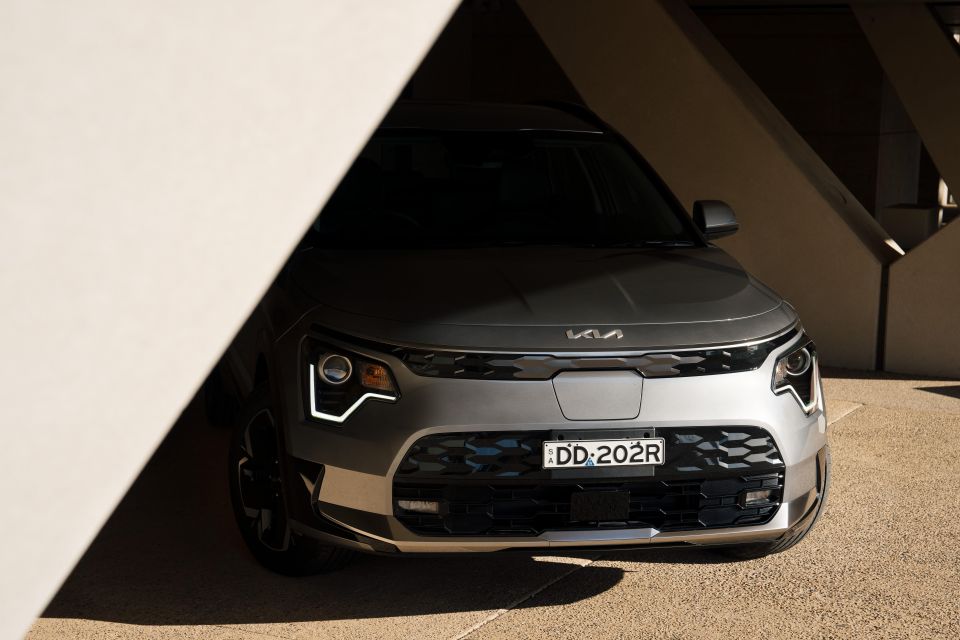
The new Niro hasn’t been crash tested by Euro NCAP, but Kia says it’s likely to be put through its paces during the third quarter of 2022. The brand is naturally targeting a five-star rating for both models.
Standard safety equipment includes:
GT-Line models adds:
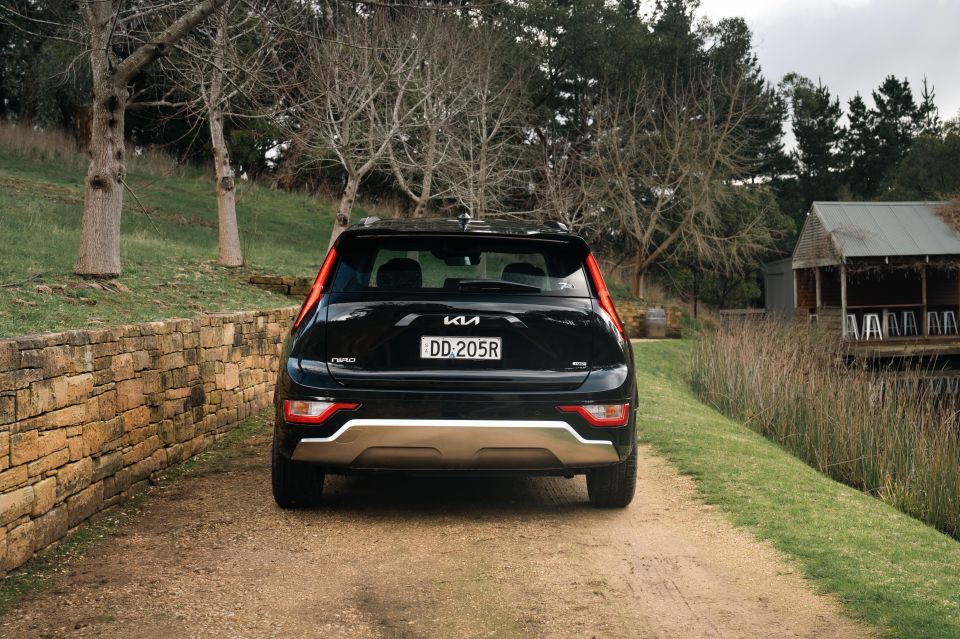
The Kia Niro is backed by a seven-year, unlimited-kilometre warranty, while the high-voltage parts are covered by a seven-year, 150,000 kilometre warranty.
Maintenance is required every 12 months or 15,000km, whichever comes first. In the EV, the first seven services will cost a combined $1754, while in the HEV they’ll set you back $4010.
Prepaid service plans are also offered for the EV, priced at $621 for three years, $1187 for five years, and $1754 for seven.
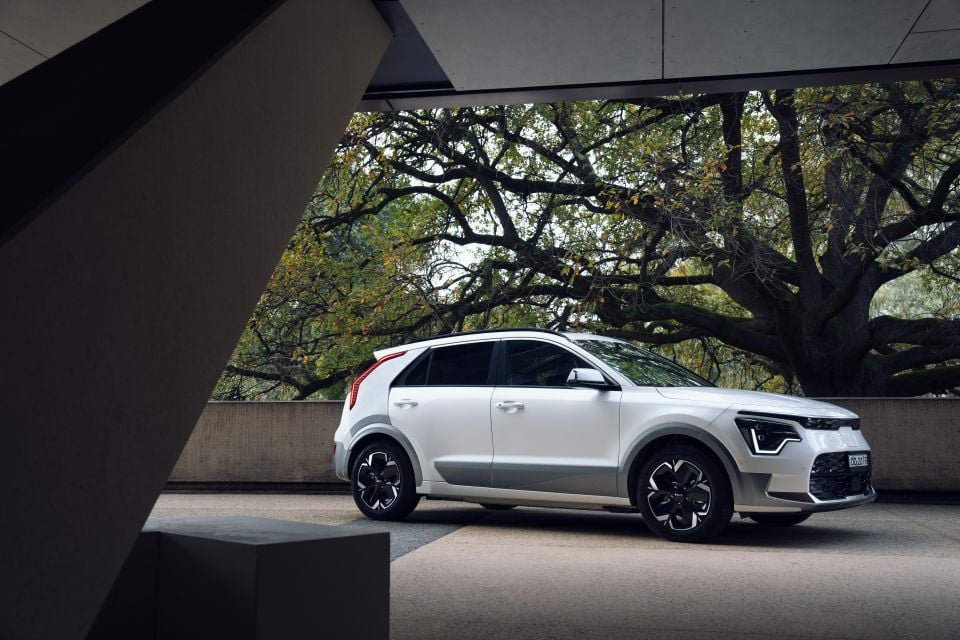
It’s hard to know quite where the Niro fits in Australia.
The hybrid isn’t as cohesive to drive as its Toyota rivals, and it’s priced in line with the bigger RAV4 instead of where we expect the Corolla Cross will sit, while the Niro EV is significantly less advanced than the larger EV6, but isn’t all that far off based on its list price.
That confusing positioning undermines what’s otherwise a relatively spacious, efficient compact-ish SUV.

The interior in GT-Line models has a high-end look and feel, and the EV has a quiet, relaxed demeanour that would make it a lovely daily driver. It’s not particularly fast, but that’s not the point here.
Even the most basic HEV S has a spacious cabin relative to its size, although the plastic steering wheel, ignition barrel, and calculator-style instrument cluster stink of cost-cutting, and undermine the strides made elsewhere.
Despite all of this, Kia will likely sell every Niro it can get. With just 75 coming to Australia per month, with a slight skew to the electric model, it’s likely the ravenous demand for hybrid SUVs and electric vehicles will mean plenty of people will snap up this particular hybrid/electric vehicle.
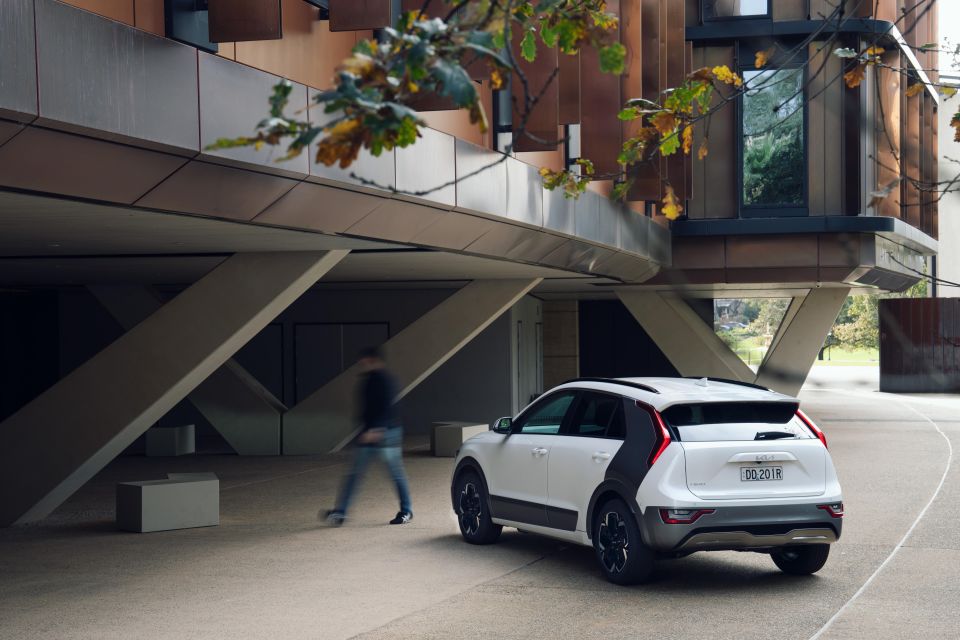
Click the images for the full gallery
MORE: Everything Kia Niro
Where expert car reviews meet expert car buying – CarExpert gives you trusted advice, personalised service and real savings on your next new car.
Scott Collie is an automotive journalist based in Melbourne, Australia. Scott studied journalism at RMIT University and, after a lifelong obsession with everything automotive, started covering the car industry shortly afterwards. He has a passion for travel, and is an avid Melbourne Demons supporter.


Max Davies
2 Hours Ago


William Stopford
18 Hours Ago


Ben Zachariah
19 Hours Ago


Derek Fung
20 Hours Ago


Matt Campbell
1 Day Ago


William Stopford
2 Days Ago